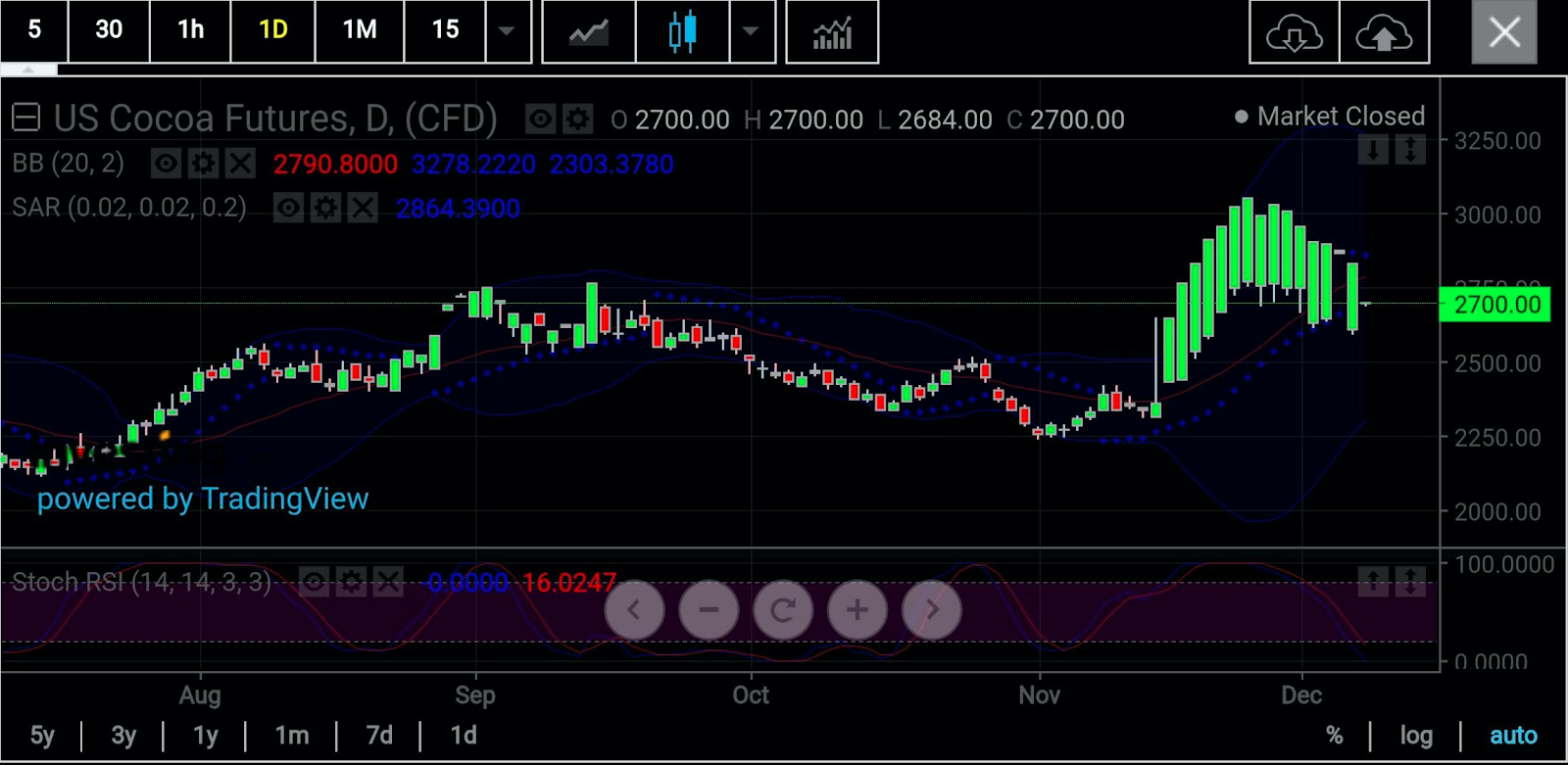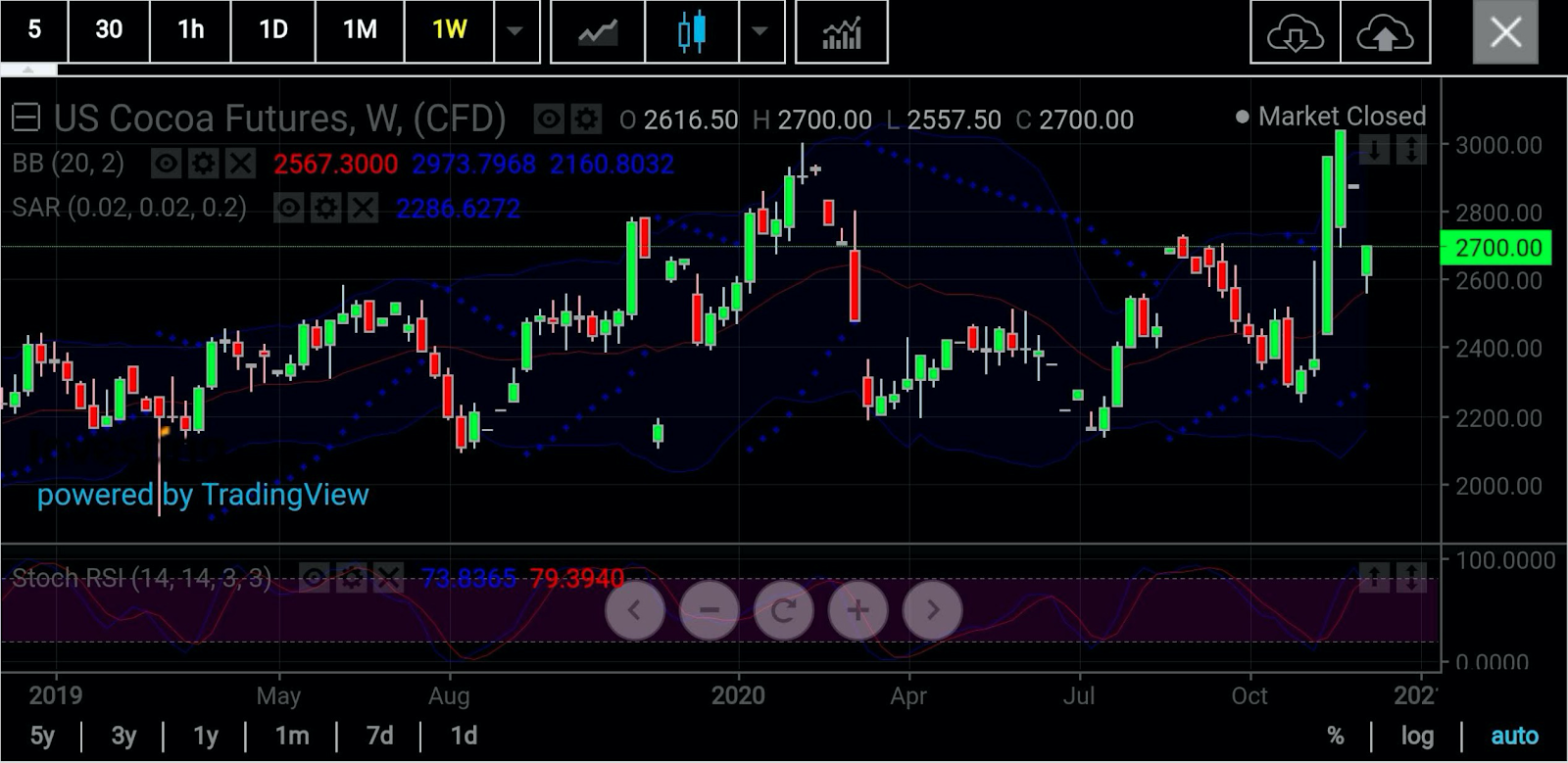Moody’s downgrades Senegal to Caa1 amid rising debt concerns
“It’s the most wonderful time of the year” … or so the song goes.
But to investors who are long cocoa—as well as candy makers who seasonally enjoy some of their highest sales during Christmas and other year-end festivities—December 2020 certainly does not feel as wonderful.
It feels gloomier than past Christmases as the renewed spike in the coronavirus pandemic has hit prices of the confection and beverage commodity and sales of treats produced from it.
Cocoa on ICE Futures US, the international marketplace for the crop grown mostly in West Africa’s Ivory Coast and Ghana, and to a lesser extent in Indonesia and Malaysia in Asia, are headed for their second crunching loss of more than 5% on the week.
For seven sessions in a row, the market has fallen without pause, going from $3,035 a tonne on Nov. 27 to $2,700 at Tuesday’s settlement in New York.
Month-to-date, cocoa’s benchmark March futures on ICE are down just over 10%, after a 31% gain in November.
Pandemic Turns Cocoa Sour In Sweet Season
Those in the know point their finger at the holiday-season COVID-19 surge that health authorities in the United States as well as Europe have been warning about—the spike as a result of people letting their guard down in customary Thanksgiving revelry now visible in increased infection numbers.
The shift from November’s gains to this month’s losses also occurred in tandem with the initial euphoria that followed news of vaccine breakthroughs that later fizzled.
Jack Scoville, analyst at Chicago’s Price Futures Group, said in his daily blog that the spike in the pandemic’s numbers has certainly impacted cocoa demand in a season literally celebrated with sweets:
“There are a lot of demand worries as the coronavirus is making a comeback in the US. Europe is also seeing a return of the pandemic.”
Weaker Grinds From Cocoa Too
Scoville added that North American and European cocoa grinds were at least 4% lower than a year ago while Asian cocoa grinds were about 10% less comparatively.
Unlike other commodities, whose prices are determined by the sheer availability of the basic raw material in the marketplace versus demand, cocoa’s value is judged by the amount of ground products one gets from its beans.
Grinding is the process that produces the so-called butter from cocoa beans that gives chocolates and ice-cream their smooth, creamy taste. It also turns out the cocoa powder required for baking and for making beverages such as hot chocolate.
The weak demand was also prompting buyers to avoid paying the “producers’ living tax” added by West African states to their cocoa beans to help farmers cope with hardships caused by the pandemic, said Scoville. He explained:
“Importers look to find a way to source cocoa without paying a premium demanded by Ivory Coast and Ghana. Both countries have instituted a living wage for producers there and are looking to tax exports to pay the increased wages.”
Caution From Hershey And Cocoa Charts
Executives at US candy giant Hershey (NYSE:HSY), updating their 2020 outlook in November, said they still saw “many risks to the short-term outlook—especially the dampening effect of further COVID-19 outbreaks and new retailing closures in key markets.”
Adding:
“That outlook now calls for organic sales to be roughly flat this year as a sharp rebound in the US market is mostly offset by weakness in other geographies.”
Technically, cocoa’s chart action doesn’t look promising for a potential move up either.

Charts courtesy of SK Dixit Charting
Sunil Kumar Dixit of Kolkata, India-based SK Dixit Charting says benchmark March contract on ICE could be set for a bigger downside:
“Weakness can be seen below $2,550 resulting in correction to $2400 & $2300 areas.”
In the event of a turnaround, cocoa could see a move above $2,650 that could take it “again above $2,820 and $3,000 levels,” he added.

Investing.com’s own price modelling for cocoa suggests the March contract could lose another $65 in the near-term.
Our Daily Technical Indicator firmly calls a “Strong Sell” on cocoa, with a Fibonacci support first at $2,669, then at $2,656 and later at $2,636.
However, should the market reverse trend into a breakout, then Fibonacci resistance will form first at $2,710, then $2,723 and later $2,743.
The pivot point between the two models will be $2,690.
As with all projections, we urge you to follow the calls but temper them with fundamentals—and moderation—whenever possible.
Disclaimer: Barani Krishnan uses a range of views outside his own to bring diversity to his analysis of any market. He does not own or hold a position in the commodities or securities he writes about.
